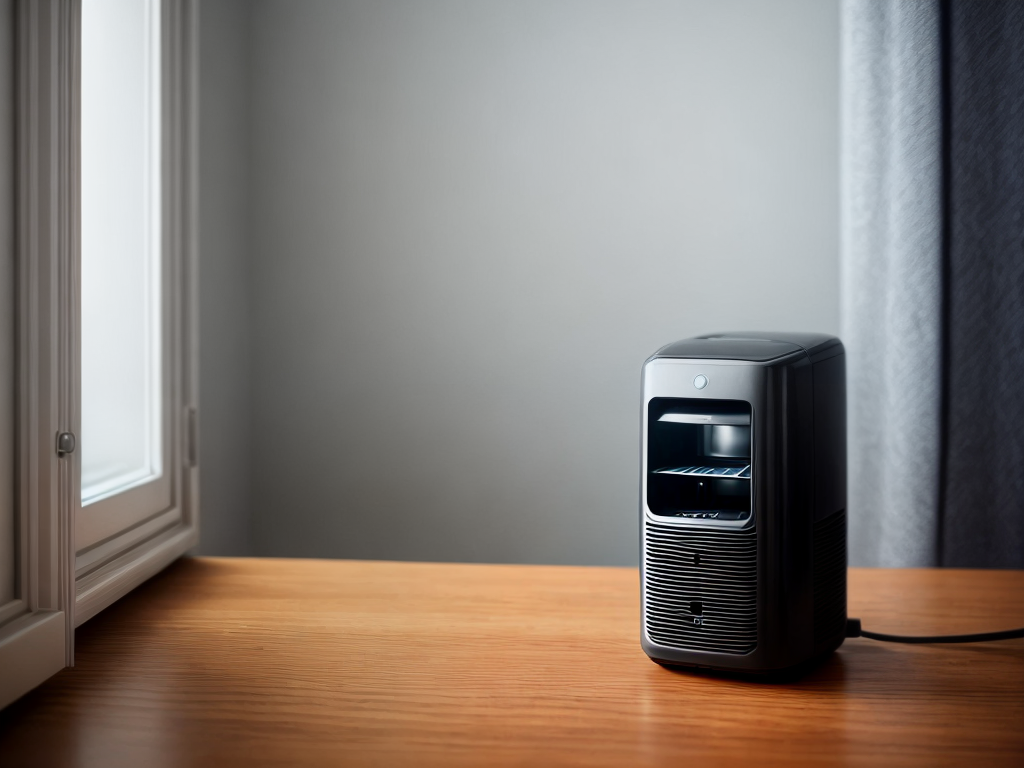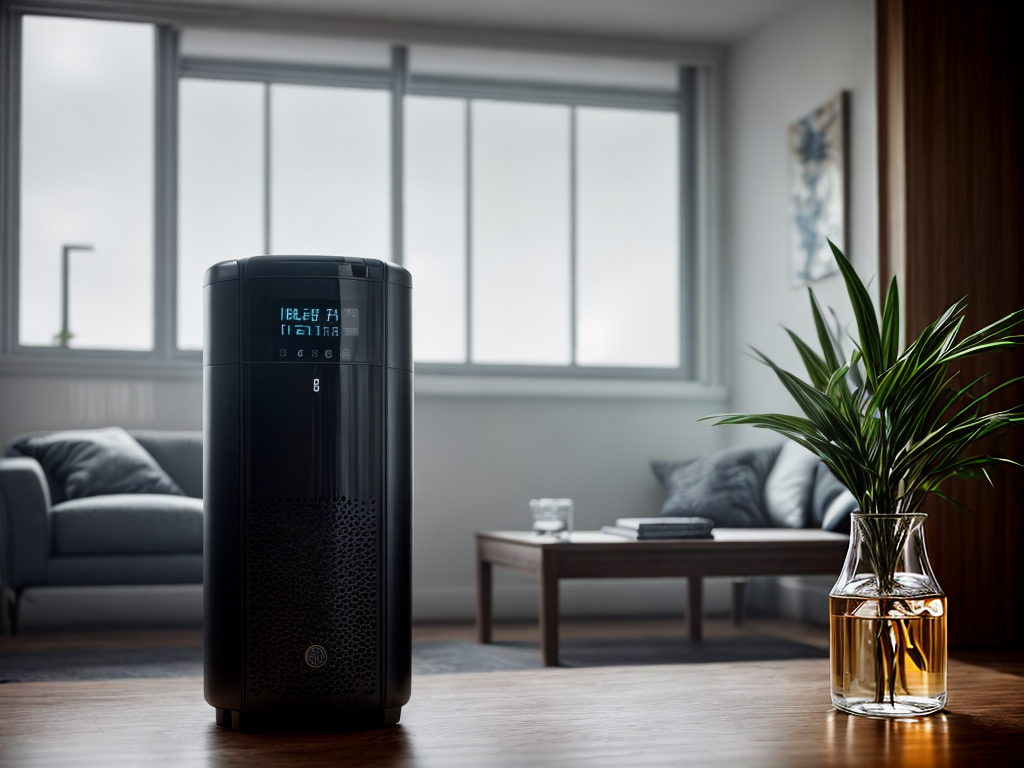
As climate change continues to sweep over our planet like a relentless storm, its impact on various industries becomes increasingly evident. The dehumidifier industry, in particular, is not immune to the effects of this global phenomenon. In this discussion, we will explore the ways in which climate change has shaped the landscape of the dehumidifier industry, from the rise in demand for flood-prone areas to the development of energy-efficient and eco-friendly models. But that’s not all – we will also delve into the role of extreme weather events and government policies in shaping the future of sustainable dehumidification solutions. So, let’s embark on this journey together and uncover the profound impact of climate change on the dehumidifier industry.
Increased Demand for Dehumidifiers in Flood-Prone Areas
I have observed a significant increase in the demand for dehumidifiers in flood-prone areas. With the rise in global temperatures and the increasing frequency and intensity of extreme weather events, flood mitigation has become a pressing concern for many homeowners and businesses. People are looking for effective ways to control the moisture levels in their homes and buildings to prevent mold growth and structural damage caused by flooding.
Fortunately, dehumidifier technology advancements have made it possible to address these concerns more efficiently and effectively. Modern dehumidifiers are equipped with advanced features such as automatic humidity control, energy-efficient operation, and smart sensors that monitor and adjust humidity levels accordingly. These advancements allow users to have more control over their indoor environment and ensure optimal conditions even in flood-prone areas.
Furthermore, the development of portable and compact dehumidifiers has made it easier for individuals to implement flood mitigation strategies in their homes. These devices can be easily moved to different areas of the house to target specific areas affected by flooding or excess moisture.
Development of Energy-Efficient Dehumidifier Models
Energy-efficient dehumidifier models have emerged as a key focus in the dehumidifier industry. As the demand for dehumidifiers continues to rise, consumers are increasingly concerned about the energy consumption and environmental impact of these appliances. In response to this growing demand, manufacturers are investing in the development of energy-saving technology for dehumidifiers.
To address the need for energy-efficient models, the industry has made significant advancements in improving the efficiency of dehumidifiers. Here are three key developments:
-
Integration of smart sensors: Energy-efficient dehumidifiers now come equipped with smart sensors that can detect the humidity levels in a room. These sensors adjust the dehumidifier’s settings accordingly, optimizing energy consumption and minimizing wastage.
-
Use of advanced compressor technology: Manufacturers are incorporating advanced compressor technology, such as variable-speed compressors, in energy-efficient dehumidifiers. These compressors can adjust their speed based on the moisture load, resulting in reduced energy consumption and improved overall efficiency.
-
Adoption of eco-friendly refrigerants: Energy-efficient dehumidifiers are now using eco-friendly refrigerants that have a lower impact on the environment. These refrigerants not only contribute to energy savings but also help reduce greenhouse gas emissions.
With market competition driving innovation, consumers can expect to see more energy-efficient dehumidifier models in the future. These advancements not only benefit the environment but also provide consumers with more control over their energy usage and cost savings in the long run.
Shifting Consumer Preferences Towards Eco-Friendly Dehumidifiers
As consumer awareness about environmental impact grows, a shift in preferences towards eco-friendly dehumidifiers is becoming evident in the market. Consumers are now more concerned about the sustainability and green technology used in the manufacturing of dehumidifiers. They want products that not only provide effective moisture control but also minimize their carbon footprint. This shift in consumer preferences is driving manufacturers to adopt sustainable manufacturing practices and incorporate green technology into their dehumidifier models.
To meet the demands of environmentally conscious consumers, dehumidifier manufacturers are focusing on sustainable manufacturing processes. They are implementing strategies to reduce energy consumption, minimize waste generation, and utilize renewable resources. By adopting these practices, manufacturers are able to produce eco-friendly dehumidifiers that have a lower environmental impact throughout their lifecycle.
In addition to sustainable manufacturing, green technology plays a crucial role in the development of eco-friendly dehumidifiers. Manufacturers are incorporating innovative features such as energy-efficient compressors, eco-friendly refrigerants, and smart sensors that optimize energy consumption. These advancements not only reduce the carbon footprint of dehumidifiers but also result in cost savings for consumers.
The shift towards eco-friendly dehumidifiers reflects a growing desire among consumers to take control of their environmental impact. By choosing products that are manufactured sustainably and incorporate green technology, consumers can make a positive contribution to reducing climate change and preserving the environment. The table below summarizes the key features of eco-friendly dehumidifiers:
| Sustainable Manufacturing | Green Technology |
|---|---|
| Reduced energy consumption | Energy-efficient compressors |
| Minimized waste generation | Eco-friendly refrigerants |
| Utilization of renewable resources | Smart sensors for optimized energy consumption |
Impact of Extreme Weather Events on Dehumidifier Sales
Extreme weather events have a significant impact on the sales of dehumidifiers. As we experience more frequent and intense hurricanes, the demand for dehumidifiers surges. Hurricanes bring heavy rainfall and flooding, leading to high levels of humidity in homes and buildings. Homeowners and businesses alike understand the importance of controlling moisture levels to prevent mold growth and protect their property. This increased awareness drives the sales of dehumidifiers, as people seek effective solutions to maintain a comfortable and safe environment.
Droughts, on the other hand, also contribute to the rise in dehumidifier sales. During prolonged periods of drought, the air becomes dry, causing discomfort and potential damage to furniture, electronics, and wooden structures. People turn to dehumidifiers to restore optimal humidity levels and alleviate the negative effects of drought. By controlling indoor humidity, dehumidifiers help preserve the longevity of belongings and create a more pleasant living or working environment.
The impact of hurricanes and droughts on dehumidifier sales can be summarized as follows:
- Increased demand during hurricane season due to heavy rainfall and flooding.
- Rising sales during droughts to combat dry air and prevent damage.
- Dehumidifiers serve as effective solutions to maintain comfort and protect property.
In a world where extreme weather events are becoming more frequent, having control over indoor humidity is crucial, and the dehumidifier industry plays a vital role in meeting this demand.
Role of Government Policies in Promoting Sustainable Dehumidification Solutions
One effective way to promote sustainable dehumidification solutions is through government policies. Government regulations play a crucial role in shaping the dehumidifier industry and driving manufacturers to develop more environmentally friendly products. By setting standards and guidelines for energy efficiency and emissions, governments can encourage the adoption of sustainable dehumidification technologies.
Government regulations can also incentivize businesses and consumers to choose sustainable dehumidifiers. Through measures such as tax credits, subsidies, or rebates, governments can make eco-friendly dehumidifiers more financially attractive. These policies encourage the market demand for sustainable solutions and push manufacturers to invest in research and development to meet these demands.
In addition to regulations, governments can allocate research funding to support the development of innovative and sustainable dehumidification technologies. By investing in research, governments can foster collaborations between academia, industry, and government agencies, leading to the creation of more efficient and environmentally friendly dehumidifiers. Research funding can also help accelerate the commercialization of new technologies, making them more accessible to the public.








